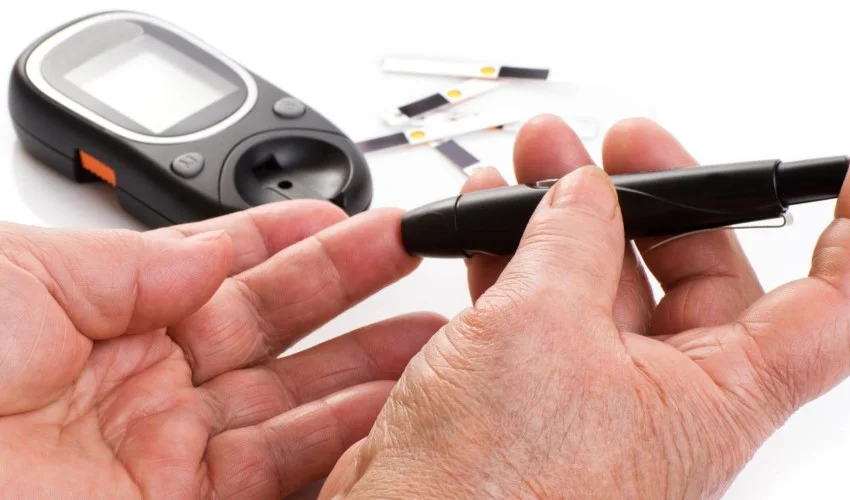Living with type 2 diabetes requires adopting a comprehensive approach that includes managing blood sugar levels, making dietary adjustments, and engaging in regular physical activity. Fitness goals play a crucial role in maintaining overall health and managing diabetes effectively. In this article, we will explore the importance of setting realistic fitness goals and tracking progress for individuals with type 2 diabetes. By understanding the benefits, strategies, and tools available, patients and caregivers can take informed steps towards achieving optimal health and well-being.
Understanding the Importance of Fitness Goals for Type 2 Diabetic Patients
Physical activity and exercise have numerous benefits for individuals with type 2 diabetes. Incorporating exercise into a daily routine can help improve blood sugar control, manage weight, enhance cardiovascular health, increase insulin sensitivity, and reduce stress. Regular exercise has been shown to effectively lower blood glucose levels by increasing the uptake of glucose by muscles, even without the use of medications. Moreover, exercise assists in weight management, as excess weight is a risk factor for developing type 2 diabetes.
Setting Realistic Fitness Goals
Setting realistic fitness goals is vital for type 2 diabetic patients as it provides a clear path towards achieving better health outcomes. Here are some steps to consider when setting fitness goals:
Consultation with Healthcare Professionals
Before embarking on an exercise program, it is crucial to consult with healthcare professionals, such as doctors, dieticians, or certified diabetes educators. They can provide guidance tailored to individual needs and ensure exercise plans align with overall diabetes management strategies.
Assessing Current Fitness Level
Understanding one’s current fitness level is essential in determining the starting point for setting realistic goals. A comprehensive assessment may involve evaluating cardiovascular endurance, strength, flexibility, and balance. Healthcare professionals can help conduct or recommend appropriate assessments.
Identifying Personal Preferences and Limitations
Recognizing personal preferences and limitations helps create an exercise plan that is enjoyable and sustainable. Whether it’s walking, swimming, cycling, or participating in group fitness classes, finding activities that align with personal interests increases the likelihood of adherence.
SMART Goal Setting Approach
Utilizing the SMART (Specific, Measurable, Achievable, Relevant, Time-bound) approach helps in setting concrete and achievable fitness goals. For example, a SMART goal might be to engage in 30 minutes of moderate-intensity aerobic exercise, such as brisk walking, five days a week, for a duration of three months.
Types of Exercise for Type 2 Diabetic Patients
Aerobic Exercise
Aerobic exercises, also known as cardio exercises, involve continuous movement that elevates the heart rate. Some suitable aerobic exercises for type 2 diabetic patients include:
- Walking: Walking is a low-impact activity that can be easily incorporated into daily routines.
- Swimming: Swimming is gentle on the joints and provides a full-body workout.
- Cycling: Cycling, whether outdoors or using a stationary bike, is an excellent aerobic exercise that strengthens the lower body and promotes cardiovascular health.
Resistance Training
Resistance training, or strength training, involves using resistance to build muscle strength and endurance. Benefits of resistance training for type 2 diabetic patients include improved blood sugar control, increased muscle mass, and enhanced overall functionality. It is important to work with a qualified fitness professional to learn safe and effective exercises. Resistance training can involve the use of free weights, resistance bands, or weight machines.
Flexibility and Balance Exercises
Flexibility and balance exercises help improve range of motion, reduce the risk of injury, and enhance stability. Two popular options for type 2 diabetic patients are:
- Yoga: Yoga combines physical postures, breathing techniques, and meditation to promote flexibility, strength, and relaxation.
- Tai Chi: Tai Chi is a gentle, low-impact exercise that involves slow, flowing movements. It improves balance, coordination, and overall well-being.
Developing an Exercise Plan
Developing a well-rounded exercise plan is crucial for long-term adherence and achieving fitness goals. Consider the following aspects when designing an exercise plan:
Frequency and Duration of Exercise
The American Diabetes Association recommends aiming for at least 150 minutes of moderate-intensity aerobic exercise per week, spread over a minimum of three days, with no more than two consecutive days without exercise. Gradually increasing duration and intensity as fitness levels improve is advisable.
Warm-up and Cool-down
Always start and end exercise sessions with a warm-up and cool-down routine. Warm-ups prepare the body for physical activity, increase blood flow to the muscles, and reduce the risk of injury. Cool-downs help the body gradually return to its resting state and prevent muscle soreness.
Progression and Adaptation
Gradually progressing exercise intensity, duration, or difficulty helps avoid plateaus and keeps the body challenged. Additionally, incorporating variety into the exercise routine helps prevent boredom and engages different muscle groups.
Overcoming Barriers to Exercise
Identifying and addressing barriers to exercise is essential for maintaining a consistent routine. Some common barriers include lack of time, physical limitations, and motivation. Strategies such as scheduling workouts, modifying exercises to accommodate physical limitations, and finding exercise buddies or support groups can help overcome these barriers.
Table: Sample Weekly Exercise Plan
| Day | Type of Exercise | Duration | Intensity |
|---|---|---|---|
| Monday | Brisk Walking | 30 minutes | Moderate |
| Tuesday | Resistance Training | 20 minutes | Moderate to Heavy |
| Wednesday | Cycling | 45 minutes | Moderate |
| Thursday | Yoga | 30 minutes | Light to Moderate |
| Friday | Swimming | 40 minutes | Moderate |
| Saturday | Rest or Flexibility/Balance Exercises | - | - |
| Sunday | Brisk Walking | 30 minutes | Moderate |
Monitoring and Tracking Progress
Monitoring progress provides valuable insights into the effectiveness of the exercise program and helps maintain motivation. The following methods can be utilized to monitor and track progress effectively:
Blood Sugar Monitoring
Regularly monitoring blood glucose levels before, during, and after exercise is crucial for understanding how physical activity affects blood sugar control. This information can guide adjustments to medication, diet, and exercise routines to maintain stable blood sugar levels.
Physical Fitness Assessments
Periodically assessing physical fitness levels, such as cardiovascular endurance, strength, flexibility, and balance, can provide a benchmark to measure progress. These assessments can be performed by healthcare professionals or qualified fitness trainers.
Tracking Physical Activity
Keeping a record of physical activity can provide a sense of accomplishment and help identify patterns or areas for improvement. Various tools and methods can be used:
- Pedometers and Fitness Trackers: These devices can count steps, track distance covered, estimate calorie expenditure, and monitor heart rate.
- Smartphone Apps: Numerous apps are available that allow users to track exercise routines, set goals, and monitor progress.
Journaling and Self-Reflection
Maintaining a journal to record exercise sessions, energy levels, mood, and other observations can offer insights into the impact of exercise on overall well-being. Self-reflection allows for adjustments to be made and highlights personal achievements.
Utilizing Technology for Progress Tracking
Advancements in technology offer additional tools for tracking progress and managing diabetes effectively. Some useful technologies for type 2 diabetic patients include:
Blood Glucose Monitoring Devices
Blood glucose monitoring devices, such as glucometers, provide accurate and timely measurements of blood sugar levels. Regular monitoring helps in making informed decisions about diabetes management and exercise adjustments.
Continuous Glucose Monitoring (CGM) Systems
CGM systems continuously monitor blood glucose levels, providing real-time data and trends. This technology can aid in identifying the impact of exercise on blood sugar levels and facilitate timely interventions.
Fitness Apps and Wearable Devices
Various fitness apps and wearable devices offer features for tracking exercise, nutrition, sleep, and overall wellness. They can provide personalized feedback, reminders, and motivation to maintain an active lifestyle.
Online Diabetes Management Platforms
Online platforms specifically designed for diabetes management offer comprehensive tracking tools, educational resources, and support networks. These platforms help users integrate exercise, nutrition, medication, and blood sugar monitoring to manage their condition effectively.
Setting realistic fitness goals and tracking progress is crucial for individuals with type 2 diabetes. Engaging in regular physical activity can provide numerous benefits, including improved blood sugar control, weight management, cardiovascular health, increased insulin sensitivity, and stress reduction. By consulting healthcare professionals, setting SMART goals, and incorporating different types of exercises into their routine, diabetic patients can achieve optimal results. Monitoring and tracking progress through various tools and technologies can further enhance motivation and help individuals stay on track. Remember, every step taken towards a healthier lifestyle is a significant stride in managing diabetes effectively.




